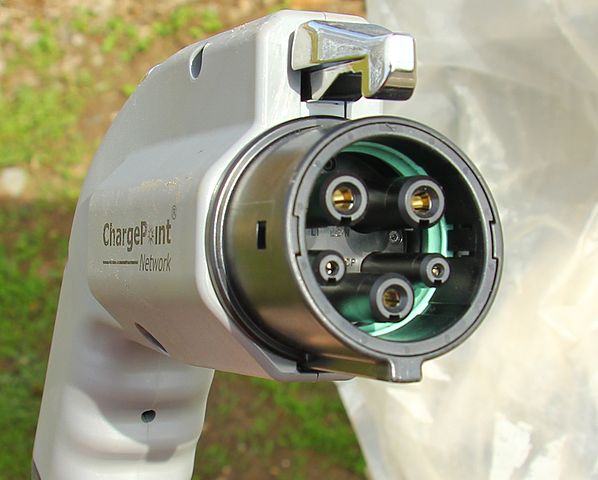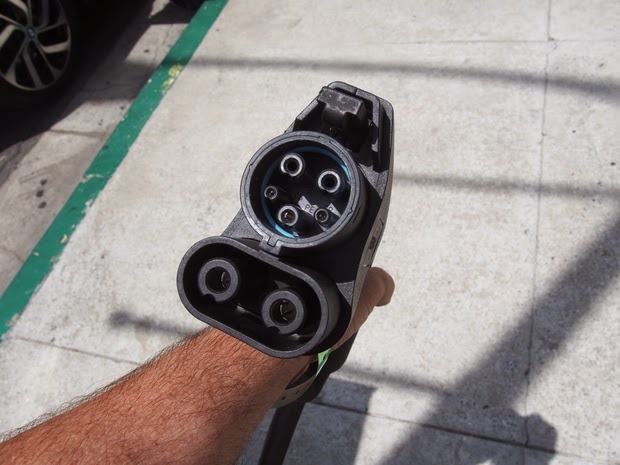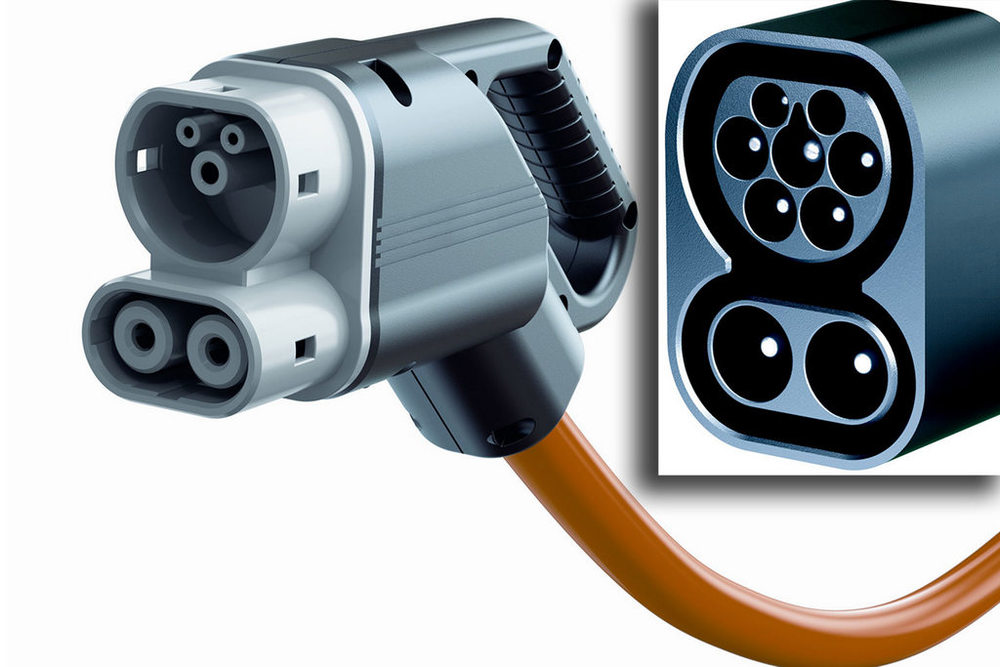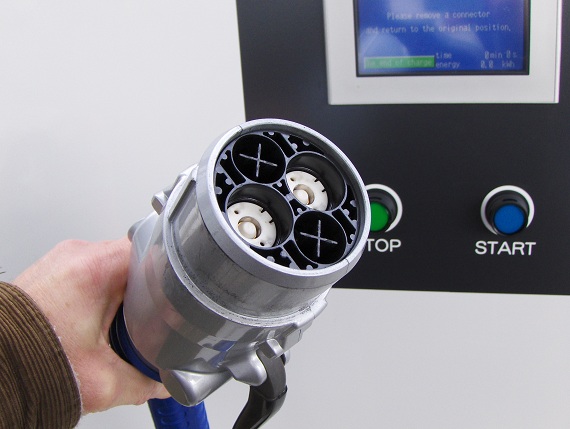Last Update: February 18, 2019

Put the tin-foil hat away, because there is clear technical justification for special charging cords for electric cars. There is a clear valid rationale to require special charging cords.
- Prevent drive-off's, meaning to prevent the car from being driven while charging
- Control/negotiate the charge rate to accommodate:
- The power rating the circuit through which the car is being charged
- The power rating of the on-board charging circuits in the car
- Potentially coordinate the charge rate across the electric grid to accommodate grid conditions
- Potentially participate in smart grid services
- Safely charge electric cars in the rain
Charging an electric car using a regular extension cord cannot
- Prevent the on-board charging system from overloading the circuit it is being charged through
- Participate in smart grid services
- Safe for use in the rain, unless there is GFCI protection in the circuit
Charging through an extension cord brings along some additional dangers
- Skinny cord that's not beefy enough to handle the current
- Substandard power outlets
- Plugs in bad condition
Bottom line is that electric car charging cords are safer than if we were allowed to use regular extension cords. Let's look at why this is so.

This is the pinout of the J1772 connector used in the USA and a few other countries. In Europe a different charging connector is used, but with the same connections and charging protocol. Let's not get stuck on the specifics, and instead use this to illustrate the safety designed into the system. The same basic system is used around the world for single-phase AC charging, even if the connector has a different shape in different countries.
This connector has three pins directly corresponding to the three prongs on a normal AC power cord. Namely, the ground line, and the two "Hot" lines that carry the AC current. Is the J1772 connector, then, a glorified extension cord? No, and it is the other two pins which add all the value named earlier.
The pilot line and proximity detection line work together to create the required safety. The proximity pin is used in detecting when the charging cable is connected to the car. The car is to use this signal to disable the drive train, eliminating the risk of drive-off's. The pilot line carries communication required to negotiate the charging rate. Once both are determined, the charging station connects the charging cord to power (energizes the cord) allowing the charging session to begin.
Limiting the charge rate is required to avoid electrical fires or other damage. Running more current through a wire than is safe can cause electrical fires. We got these electric cars to save the planet, and the last thing we want is to burn down the house.
There is also electrical monitoring of the grounding, which is probably equivalent to GFCI protection.

There is also safety built into the physical shape of the charging plug.
Notice how all connectors are within the round body of the charging plug. That round body snugly fits into a gap to form a weather-tight seal. That seal forms a first layer of defense against rain or other elements from intruding into the electrical connection.
Recall that the power lines are not energized unless the proximity and control lines are both connected. Meaning that the connector is perfectly safe when waving it around like shown in this picture. By the time the proximity/control lines are connected, and the J1772 charging plug is securely nestled in the charging socket.

This connector is used in Europe. You'll see it has six connections where the USA connector has only 5. All five of the connections used in the USA J1772 connector are present in the Type 2 connector used in Europe. Notice how the physical shape shares many of the same characteristics. Everything which was said earlier, hence, applies here.

This connector provides DC fast charging by extending the regular J1772 connector shown above. It contains the same five connections in the same physical arrangement, along with two more mins that carry DC current for DC fast charging. Everything which was said earlier applies here.

This connector provides DC fast charging by extending the Type 2 Mennekes charging connector shown above. It contains a subset of the Type 2 connections, plus two added lines for carrying the DC charging current. Everything which was said earlier applies here.

This connector provides DC fast charging using the CHAdeMO standard which was defined in Japan well before the J1772-based connectors were defined. CHAdeMO is used around the world, primarily by the Nissan Leaf. The CHAdeMO standard was defined by TEPCO and other companies in Japan. We haven't found a good writeup of its safety characteristics, but it does have many of the same protections.
See EV DC Fast Charging standards – CHAdeMO, CCS, SAE Combo, Tesla Supercharger, etc


